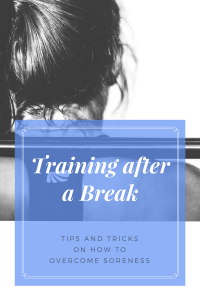“Youth is Wasted on the Young” – George Bernard Shaw
When I was in my 30’s, I was strong. I would work out with heavy weight, my strength training schedule was carefully planned and followed, and about every 12 weeks, I would dutifully take a week off from training, to give my body a break, and ensure that I wasn’t over-training.
After the self-imposed week off from training, I would pick right back up where I left off, and move on with the rest of my training schedule.
Then, something ‘magical’ happened: I turned 40.
Everything changed.
After I turned 40, if I took a week off for a vacation, or just because my body needed a break, Oh. My. GOD! The Soreness! For Days!
See, beginner exercisers wonder when the soreness is going to get easier. And the answer to that is: if you’re consistent, your body should get used to it in a few weeks. BUT if you’re consistent, you should be building muscle, and then when you get sore, unfortunately you just have more muscle to get more sore! ha!
I know – not a resounding endorsement for building muscle.
But since I built up a lot of muscle when I was in my 30’s, there’s a lot to get sore!
NOT taking a week of from strength training is not an option. Rest is just as important as work when we want progress.
So, what do you do?
I had to come up with some strategies in re-introducing myself to the gym.
Decrease Weight, Increase Repetitions
What I like about this technique, is that I get to train the same muscles that I’ve been working, and do the workouts that I’m supposed to be doing – I just decrease the weight (like, a lot!) and perform more repetitions. So, if I typically perform leg presses with 250 lbs for 12 repetitions, I might reduce the weight to 150 lbs, and do as many as I can at that weight (like 20).
I may also do a reduced number of sets; where I typically perform
Body-Weight Only Workouts
Recently, after hurting my back, I felt like my body was strong enough to start strength training again, but felt like I needed to work back up to added weight. So, I created a challenge filled with body weight only workouts. (You can Join the Challenge HERE)
Body weight workouts can be super challenging, but what’s great about them (especially after coming back from an injury) is that there’s less risk for re-injury. You don’t have to worry about putting the weight down incorrectly, or moving in a way that might jeopardize healing.
Reducing Delayed Onset Muscle Soreness (DOMS)
You can guarantee that no matter what you do, you will be sore. Unfortunately, taking Non-Steroidal Anti-Inflammatories (Ibuprofen, or Acetaminophen) won’t help, and could impair your goals.
What seems to work best, when getting over exercise related muscle soreness, is movement. Walk, stretch, and move as much as you can. Drink water, and icing can also help if your muscles are sore to the touch.
If you like what you’re reading, join my email list and get access to my best stuff. Stuff that’s even better than this! I know. Can you believe that there’s more? If you’re not on the list, sign up HERE to get more tips, tools, and ideas delivered weekly to your inbox.
You’ll learn how to change your relationship with food, your body, and realize that what you eat doesn’t determine whether or not you are a good/bad person.
And you don’t have to torture yourself with celery sticks and rice cakes (well, unless you’re into that kind of thing). O.o